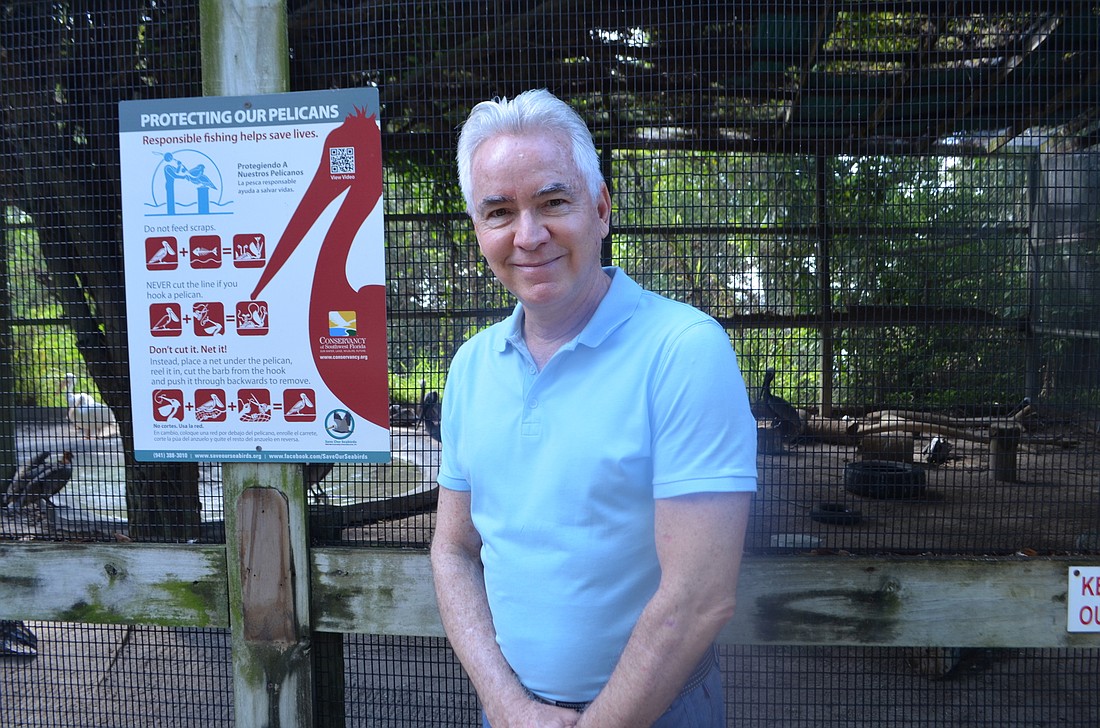- May 4, 2024
-
-
Loading

Loading

David Pilston went in front of the City Commission on Monday looking for a long-term commitment.
Pilston is the CEO of Save Our Seabirds, a bird rescue nonprofit that’s preparing to enter a potentially transformative period.
The group sees an opportunity arising: Its neighbor on City Island, Mote Marine Laboratory and Aquarium, is preparing to move its aquarium operation out of the city.
That leaves a void in the area, Pilston reasons. He hopes Save Our Seabirds can step into the vacancy Mote’s aquarium will leave, becoming a premier tourist attraction on the barrier islands.
He knows some people might not think of Save Our Seabirds as a destination, but it already attracts 25,000 visitors annually. Now, the organization is optimistic it’s positioned to make a move to draw even more people to its home at 1708 Ken Thompson Parkway.
That’s why, at Monday’s City Commission meeting, Pilston sought the commission’s approval to extend Save Our Seabirds’ lease of the city-owned property for another 20 years.
“Our goal is to really create a world-class destination here for the people of Sarasota and Longboat,” Pilston said. “In order to do that, we needed to have a long-term lease.”
After some scrutiny, the commission voted unanimously to approve the lease extension. There were some questions from commissioners about the parameters of the agreement, inspired by a recent series of recommendations pertaining to the city’s lease policies from the Coalition of City Neighborhood Associations. Ultimately, though, the board felt comfortable committing to the deal.
“They’re hopefully not going anywhere,” Commissioner Hagen Brody said.
Per the terms of the agreement, Save Our Seabirds will continue to pay $10 per year to use the city property. The lease includes a mutual option to extend the agreement for two additional 10-year periods.
The lease also speaks to the organization’s intention to expand the scope of its operations. The contract mentions the possibility of adding a dock next to the facility, which could facilitate the operation of boat tours, Pilston said. It also mentions possible food and beverage sales — an amenity that could come in handy if people are spending more time there, Pilston said.
Save Our Seabirds would have to get city approval to undertake either of those projects. For now, the nonprofit isn’t committing to any single thing. A planning conversation has been ongoing for the past eight months, but Pilston said a forthcoming July board retreat will provide even more clarity on the direction the organization’s leaders want to take.
“We can brainstorm where we want to be five years from now, 10 years from now and 20 years from now,” Pilston said.
The goal isn’t growth for growth’s sake, Pilston said. By drawing more people to the habitat, he thinks Save Our Seabirds can improve the public’s awareness of issues affecting birds. The organization has an active interest in teaching people to behave responsibly and pay attention while driving, golfing or participating in other activities where birds are at risk.
“The core of our mission is rescue, rehabilitate and release, but if we can prevent injuries from happening, we won’t have to do ‘rescue, rehabilitate and release’ as much,” Pilston said. “We want to get fewer calls.”
Save Our Seabirds recently celebrated its 10th anniversary operating at City Island. With an eye toward growth, the organization is considering undertaking its first capital fundraising campaign to facilitate future needs. Although the details are yet to be determined, Pilston is eager to embark on a new direction.
“We’ve been spending the past 10 years putting everything together,” Pilston said. “Now we’re thinking about, where do we go from here? How do we make it even better than it is?”